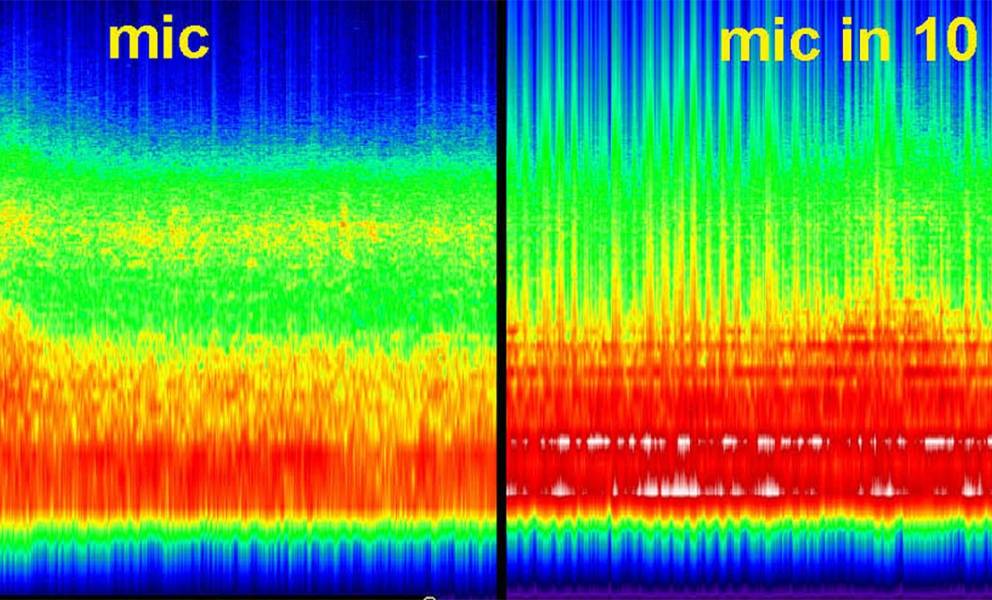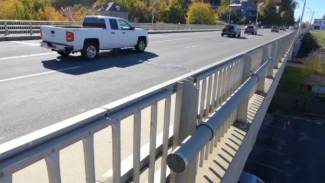When I first met American composer and sound artist Bruce Odland at Ars Electronica in 1987 – I was invited by the festival director to assist Bruce with his installation – it became clear very quickly in our initial conversations that our respective approaches to the world were auditory ones. We were both firm believers that our everyday listening habits determined how we perceive music and sound. Focusing on sound installations/compositions in public spaces was therefore a logical next step for us. Two years later we founded O+A, using the term “hearing perspective” to describe our common starting point for our artistic explorations and in order to produce auditory art together.
Around 1993, after several large outdoor installations, we looked at our own situation. What is the starting point, and what questions are we pursuing? So, this text from back then and the Sound Stories shed light on each other retrospectively:
O+A Hearing Perspective (Hörperspektive)
Since the Renaissance, we have had an agreed visual perspective and language to speak accurately about images. We still need to improve this in the world of sound, where words fail us to even describe, for instance, the complex waveforms of an urban environment, much less what those sounds do to us and how they make us feel. We are lost in a storm of noise with no language for discussion.
Odland and Auinger are learning to make sense of our sound environment by listening with attention, hearing, exploring, and attempting to understand the cultural waveform as a language. In a primarily visual culture where decisions and budgets are often made through visual logic, we must note that thinking with your ears tells a very different story. Why does the MOMA sculpture garden, the bastion of High Art, sound like any taxi stand in midtown NYC? Why is an expensive "quiet" car quiet only when riding on the inside?
O+A collects, filters, and expands resonances found in nature and cities and tries to unlock their meaning. These sounds are often shut out of our mental picture of space as "noise." By listening to and studying these noises, they become helpful sound sources. Closer observation of these sounds often reveals a hidden music of exciting details, proper tones, and harmonics, even a potential melodic interest. We collect and archive these as an alphabet of sounds.
O+A has developed compositional tools to sculpt and transform our sonic environment. These tools allow us to extract the harmonic material from city noise, filter it, shape it, and play it back in the moment to transform that environment's feelings, atmosphere, and sound design. We can extract the melodies and make the hidden voices hearable. This alters the psychoacoustics of a site, shifts the emotional landscape, and allows the people present to perceive the world through their "musical" brain instead of the part that decodes noise.
O+A does not import exotic sounds to their installation sites. Instead, they distill musical information from the ambient city noise. The compositionally chosen overtones of the collecting resonators produce a rich, harmonious chord that transforms the perception of the space, enhancing its aesthetic value in profound and unexpected ways.
Enlarging the selected musical resonances found at the site to a scale observable to the public requires a series of aesthetic and compositional choices. What is the usage pattern of the space, and how can we create a perceptual shift that would harmoniously enhance this? Where, within the architecture, is the acoustical focal point? Which visual aspects of the site create a valuable framework for listening?
When we make large-scale sound installations in public spaces, our starting point is the basic environmental soundscape of the site. Architecture, history, acoustics, and social dynamics of a given space are considered. Often, the visual and sonic aesthetic needs to be clarified. A carefully planned visual aesthetic of serenity, focus, and power can easily exist within the sonic chaos of cars, helicopters, muzak, and emergency sirens. The challenge is to regain information that our hearing can decode from that chaos and re-invigorate our hearing environment with that harmonious (version of) reality. (Croton on Hudson 1993)
So, over the years, we developed an installation format called by its main principle at work - resonance installations. In early 1992, by working on a piece at Trajan's forum in Rom, a storage place for Roman amphoras, we discovered by accident that we could use them as resonators for the traffic-heavy ambiance invading the window and doorless building.
It allowed us to transform the ancient Roman forum's ambient into a real-time harmonious reality. The final installation was called Traffic Mantra; it showed a noticeable mood shift towards calm by people at the site.
O+A compositional Tools
Resonance Tube
After using Roman amphoras (Rom, 1992) for the first time to filter and transform the actual ambiance of a site by enhancing an overtone spectrum on a chosen fundamental, we developed the resonance tube. The resonance tube allows us to define the tuning by tube length and position the microphone in the tube at an overtone position, enriching the transformed sound.
The sketch shows the position of a microphone at the position three-sevenths of the tube length.
The spectrograms show the exact moment one pure and the other transformed by the resonance tube.
Speakers used for the specific installations are the second composing tool we are constantly working on and developing further. From our first installation at Garten der ZeiTräume in Linz (1990), we could not use standard loudspeakers because their look and soundwave dispersion would have confused the experiential opportunity we wanted to create.
Soundstone Speakers
Ramp - Loudspeaker
Planet -Speakers
Planet Speaker, GdZ Linz (A) 1990 [17]; Red Sphere-Loudspeaker, Frankfurt (D) since 2011
Performance Loudspeaker
Flying Mylar-speaker – QNL, Bruegge (BE) 2015 [19]; Parabolic Loudspeaker - City-Ears, Nice (F) 1995
O+A Sound Stories
Besides going deeper into transforming a site with this working principle, we followed our general curiosity about sound and materials over the years. For example, inventing instruments and interfaces to play with natural forces like water flows and wind and carefully explore our most urban environment by thinking with our ears is an ongoing theme in our artistic praxis and research.
A year ago, we had the idea to make our work more accessible. When we went through all our materials, we decided to create this video archive, which already contains more than 45 videos, and we made it public with the following short text:
O+A Sound Stories are a collection of short videos created over the years while working together on projects. On the one hand, the videos talk about acoustic and psychoacoustic phenomena, musical situations, and how we operate and explore. On the other hand, they question our mostly urban living environments with a Hearing Perspective and Thinking With Your Ears. We are constantly exploring, decoding the world around us by listening with intent. We believe that we will not understand ourselves as a culture until we understand our noise. (O+A Croton on Hudson 2022)
O+A Sound Stories are structured in 3 playlists:
- sound stories - containing all videos including experiments, studies and auditory situations, installations and performances.
- Enjoy, and keep thinking with your ears! More will come.
- https://www.youtube.com/@oasoundstories
Sam Auinger
Sam Auinger is a sound thinker, composer and sound artist. His artistic research focuses on deepening the understanding of acoustic/auditory qualities in urban living environments. He propagates "thinking with the ears". For him, it is an important everyday practice to understand our role in an endangered planetary climate on all levels, from the social to the ecological. Together with the artist Bruce Odland, he founded O+A in 1989. Their central theme is the auditory perspective. They are known for their permanent sound installations in public spaces and tuning - transformations of sound in real time. Examples: Harmonic Bridge MassMoca (US) since 1998, Sonic Vista Frankfurt (D) since 2011 and at documenta 14 with "Symphony of Resonances" in Thessaloniki (GR) 2017, among others.
Bruce Odland, sound thinker, composer, sound artist, began his career as a classically trained composer. His ears led him to spend years recording the fractal melodies and rhythms of nature. His first large-scale sound installation based on these recordings, "Sun Song", took place in Colorado in 1977. In 1981, he became Director of Sound and Music at the Denver Center and was instrumental in developing new ideas for immersive sound design for theater. He is an artist who thinks with his ears. He has lent his sensibility to collaborations with many of his heroes; Laurie Anderson, Peter Sellars, Wally Shawn, the Wooster Group, JoAnne Akalaitis and Andre Gregory. He has done award-winning work in museums, radio, theater, film and digital art. In 1989, Bruce Odland and Sam Auinger founded O+A and created a series of installations that transform the noise of the city into harmony in real time, as a human, place-making gesture. Together they develop a "listening perspective" on the world. He is the founder of the TANK Center for Sonic Arts.
Article topics
Article translations are machine translated and proofread.
Artikel von Sam Auinger
 Sam Auinger
Sam Auinger 

















